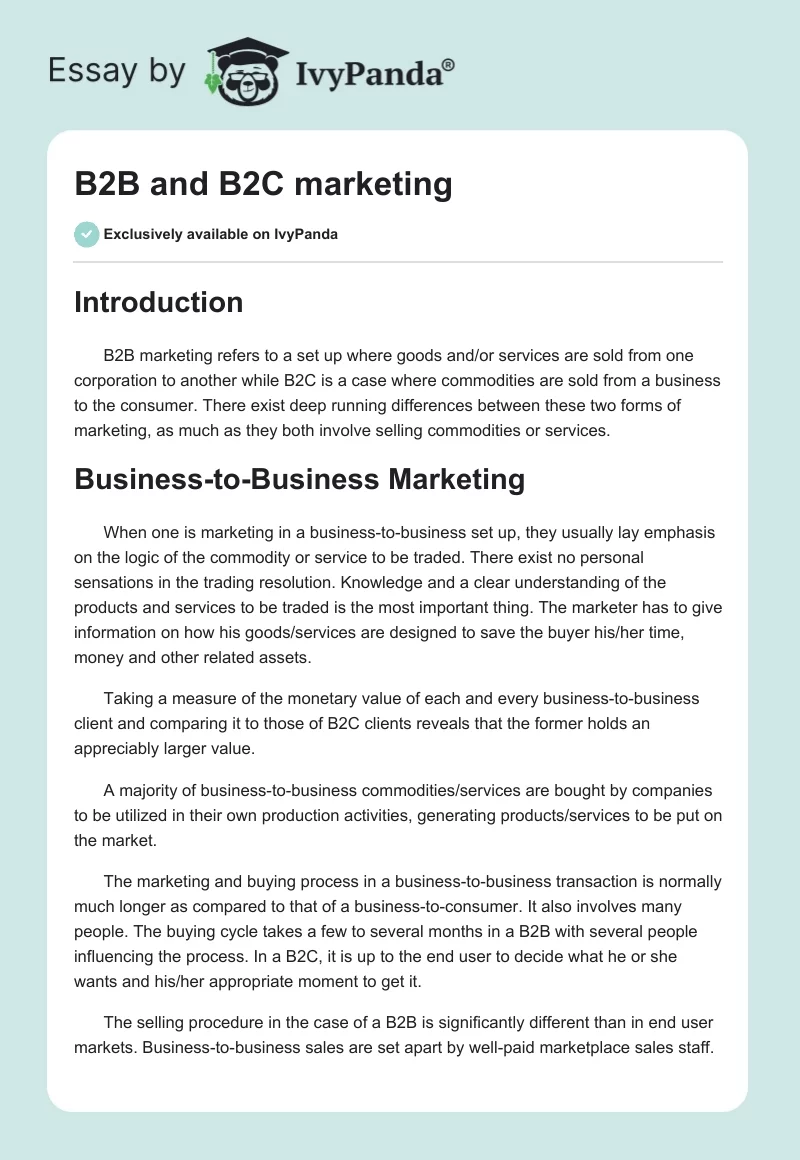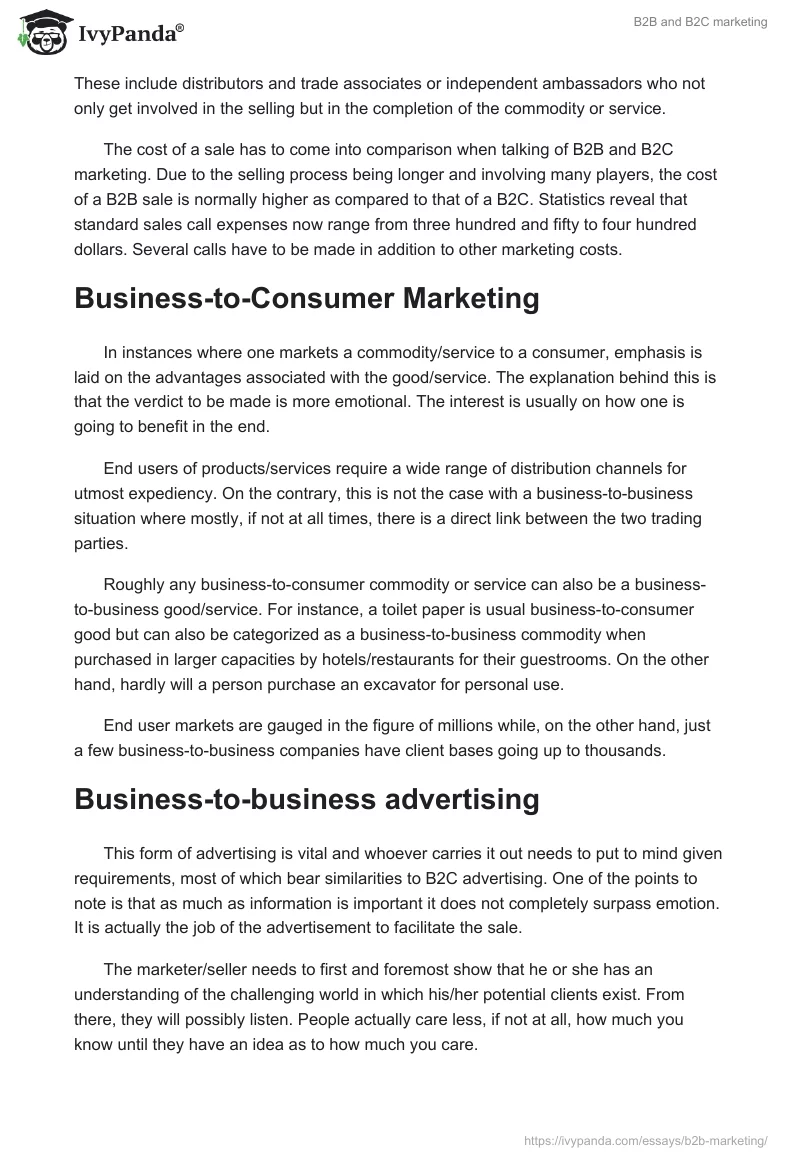Introduction
B2B marketing refers to a set up where goods and/or services are sold from one corporation to another while B2C is a case where commodities are sold from a business to the consumer. There exist deep running differences between these two forms of marketing, as much as they both involve selling commodities or services.
Business-to-Business Marketing
When one is marketing in a business-to-business set up, they usually lay emphasis on the logic of the commodity or service to be traded. There exist no personal sensations in the trading resolution. Knowledge and a clear understanding of the products and services to be traded is the most important thing. The marketer has to give information on how his goods/services are designed to save the buyer his/her time, money and other related assets.
Taking a measure of the monetary value of each and every business-to-business client and comparing it to those of B2C clients reveals that the former holds an appreciably larger value.
A majority of business-to-business commodities/services are bought by companies to be utilized in their own production activities, generating products/services to be put on the market.
The marketing and buying process in a business-to-business transaction is normally much longer as compared to that of a business-to-consumer. It also involves many people. The buying cycle takes a few to several months in a B2B with several people influencing the process. In a B2C, it is up to the end user to decide what he or she wants and his/her appropriate moment to get it.
The selling procedure in the case of a B2B is significantly different than in end user markets. Business-to-business sales are set apart by well-paid marketplace sales staff. These include distributors and trade associates or independent ambassadors who not only get involved in the selling but in the completion of the commodity or service.
The cost of a sale has to come into comparison when talking of B2B and B2C marketing. Due to the selling process being longer and involving many players, the cost of a B2B sale is normally higher as compared to that of a B2C. Statistics reveal that standard sales call expenses now range from three hundred and fifty to four hundred dollars. Several calls have to be made in addition to other marketing costs.
Business-to-Consumer Marketing
In instances where one markets a commodity/service to a consumer, emphasis is laid on the advantages associated with the good/service. The explanation behind this is that the verdict to be made is more emotional. The interest is usually on how one is going to benefit in the end.
End users of products/services require a wide range of distribution channels for utmost expediency. On the contrary, this is not the case with a business-to-business situation where mostly, if not at all times, there is a direct link between the two trading parties.
Roughly any business-to-consumer commodity or service can also be a business-to-business good/service. For instance, a toilet paper is usual business-to-consumer good but can also be categorized as a business-to-business commodity when purchased in larger capacities by hotels/restaurants for their guestrooms. On the other hand, hardly will a person purchase an excavator for personal use.
End user markets are gauged in the figure of millions while, on the other hand, just a few business-to-business companies have client bases going up to thousands.
Business-to-business advertising
This form of advertising is vital and whoever carries it out needs to put to mind given requirements, most of which bear similarities to B2C advertising. One of the points to note is that as much as information is important it does not completely surpass emotion. It is actually the job of the advertisement to facilitate the sale.
The marketer/seller needs to first and foremost show that he or she has an understanding of the challenging world in which his/her potential clients exist. From there, they will possibly listen. People actually care less, if not at all, how much you know until they have an idea as to how much you care.
Creativity is just as important as in any other form of advertising. There is nothing actually wrong with making this form of marketing a bit tasteful.
It is also important to bear in mind that it is actually people who buy things and not companies. It may require that a committee has to approve any purchase, but at the end of the day these committees are composed of people.
Business-to-business branding
Business-to-business branding makes much sense, with the fact that enterprises mostly use logical decisions in the purchase of commodities and/or services notwithstanding. Superior branding is not just about getting people/corporations into unfounded buying, it is about giving information on the gains and worth that a given commodity/service gives to users.
Branding is not only a consumer goods thing. This was effectively demonstrated by IBM when it effectively utilized the power of branding by laying emphasis on the value it availed to its clients and making the purchasing practice uncomplicated.
The company actually created eServers when it recognized that its alpha numerical commodity naming system confounded clients and thus ended up putting millions of marketing dollars to waste. Simplifying its authoritative business computer offerings and rebranding them as eServers made sure that clients understood them with ease.


